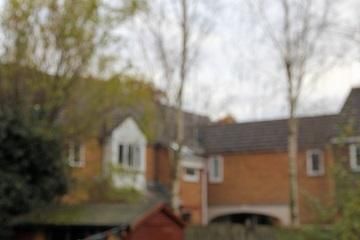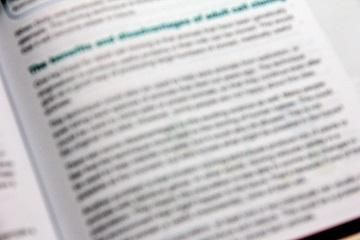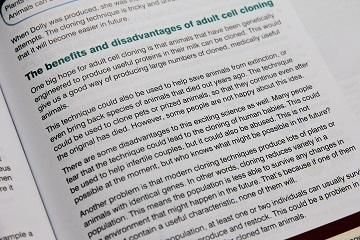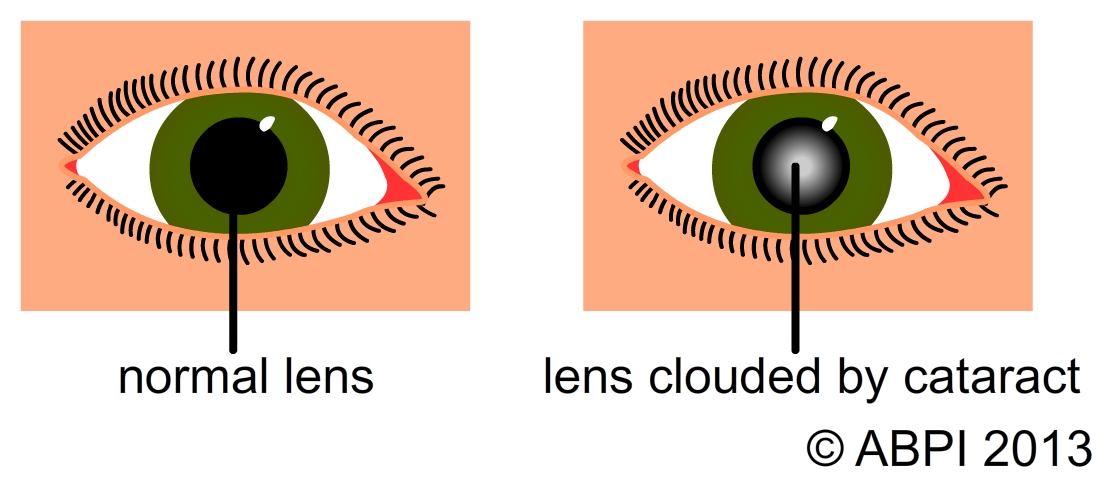This topic takes on average 55 minutes to read.
There are a number of interactive features in this resource:
 Biology
Biology
There are many problems which can affect the eyes and the visual system. Some of them are more common as people get older, but some can affect people at any age. Some infectious diseases can affect the vision, but often difficulties in seeing are the result of problems with the structure of the eye or the effects of ageing. Problems in the eyes show just how important the different structures are.
Many people can see objects which are close to them or in the distance equally clearly. However the normal accommodation of the eye just doesn’t work for some people. Long and short sight can occur at any age but they often appear with ageing as the lens of the eye gets more rigid and cannot change shape as easily.
Short sightedness can be corrected using a concave or diverging lens which spreads the rays of light out more before they get into the eye. This means that in spite of a thicker lens or long eyeball you can bring the light into perfect focus on the retina

Short sighted view without glasses.

Concave lenses (worn as glasses or contact lenses) make all the difference to the distance vision of a short sighted person.
(photo: Anthony Short)
A long sighted person can focus clearly on objects in the distance but close objects appear blurred. This is usually either because the lens of the eye is too flat even when the ciliary muscles are fully contracted or because the eyeball is particularly short. In both cases the light from the close objects is focused behind the retina.
Long sight can be corrected using a convex or converging lens which brings the rays of light closer together and makes them more parallel. This means that in spite of a thinner lens or shorter eyeball you can bring the light into perfect focus on your retina.

Long sighted vision without glasses.

Convex lenses (worn as glasses or contact lenses) make all the difference to the close up vision of a long sighted person.
(photo: Anthony Short)
A cataract is a clouding of the lens. They often affect older people, and even older pets. Diabetes increases the risk of cataracts. They can develop in one or both eyes. As the lens gets cloudy the vision becomes blurred and colour vision is lost. Eventually the person will become completely blind in the affected eye.
Cataracts can be treated relatively simply – the cloudy lens is removed by surgery and replaced with a clear plastic lens. Most people then need to wear glasses for reading as the replacement lens is usually for distant vision.
Sometimes babies are born with cataracts. If these are removed within the first few weeks of life, the child will be able to see.

When cataracts can be seen like this, they are causing blindness in the affected eye.
In glaucoma the optic nerve, which carries impulses from the rods and cones of the retina to the visual area of the brain, is damaged just where it leaves the eye. The damage is usually the result of a build up of pressure inside the eye which squeezes and damages the optic nerve. In a normal eye aqueous humour is being made all the time and it also drains away all the time through tiny little tubes (ducts). If these tubes get blocked the fluid cannot drain away and the pressure gradually increases. There are usually no symptoms until blindness begins to develop. Without treatment glaucoma causes total blindness.
Glaucoma gets more common as people get older and there is a genetic link so it often runs in families.
If glaucoma is detected early, it can be treated with eye drops or surgery. This protects the optic nerve and saves the sight of the person. It is a good idea to have regular eye examinations because an optician always checks for glaucoma by measuring the pressure in your eyeballs.
This eye condition is quite common in older people. The central region of the retina is damaged or destroyed. People keep their peripheral vision, but as that uses mainly rods vision can become blurred and not in colour. People cannot see in clear focus and they can’t see the middle of their field of vision which means they can’t read and they often can’t see the faces of the people they are talking to.
There are two main types. Dry AMD is the result of poor blood supply to the retina. It develops slowly but can’t be treated at the moment. Wet AMD can develop very fast. It is caused when abnormal blood vessels grow under the retina. It can be treated by drugs which stop the blood vessels growing and sometimes by surgery to remove them. Treatment doesn’t usually reverse the damage but it stops it getting worse.